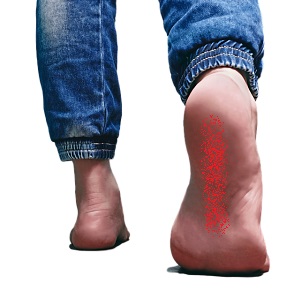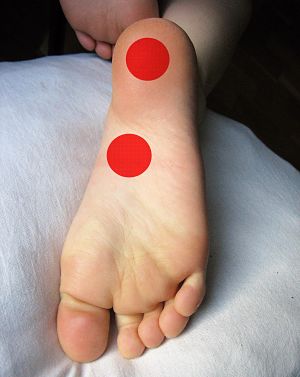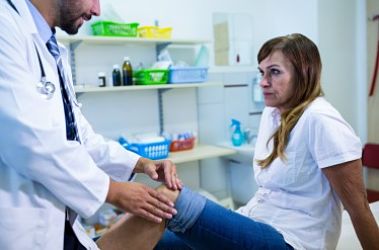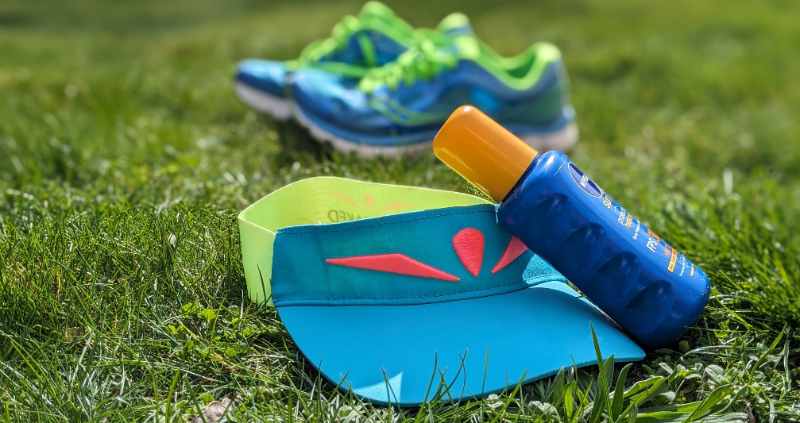Plantar Fasciitis Cure - Home Treatments

If you are looking for a plantar fasciitis cure and panicking about taking time off running, well don't get despondent as there are several things that you can do yourself at home which can really help.
If you are not sure if you have plantar fasciitis, have a look here at the signs and symptoms of plantar facsiitis.
Plantar fasciitis is incredibly common among runners and accounts for 10% of running injuries. If you ignore it though, the pain will get worse and you could be forced to take several months off running and you could even develop heel spurs which is a whole new ball game.
The good news though is that in 90% of cases, there is a plantar fasciitis cure that you can do yourself at home which can minimise the disruption to your running.
Plantar Fasciitis Cure - 8 Home Treatments
These plantar fasciitis cure home treatment remedies are not in any particular order and there is no reason why you can't do several or all of the treatments at the same time.
When deciding on a treatment, it makes sense to visualise what that treatment is doing to your body and how it might be healing you. In doing this, you are much more likely to follow through with the treatment on a regular basis and not just try a few days here and a few days there.
Visualise the plantar fascia as a piece of leather which has developed small tears in it due to the constant excessive stretching and usage. Your aim is to let it rest so that all those tiny tears have time to heal, just like you would not keep picking at a scab and reopening a wound.
#1 - Rest
As much as we runners hate to hear it, the best plantar fasciitis cure to help you heal quickly, is to take some days off running - even if the pain is not that bad.
Try and reduce walking as much as possible as you want to give the plantar fascia time to recover and for any micro tears to heal. Put your feet up and enjoy the rest!
Depending on how inflamed your injury is, you should rest for at least 2 days and then reassess. If it is still very sore when walking around, then don't run - yet!
#2 - Wear an Arch Support during the day
Wear an arch support in your everyday shoes. When I was suffering with arch pain, I wore a padded arch support during the day and it definitely helped. By wearing this, you should find that your arch will feel much less fatigued and sore at the end of the day.
Not all arch supports are the same and some are ridiculously bulky and some have uncomfortable padding, so choose carefully. This is the gel padded arch support that I wore.
#3 - Wear a Night Foot Splint
There are various splints on the market ranging from hard boots to soft socks. I was hesitant at first to try any of these as they are not cheap and are pretty ugly in bed but I eventually opted for the Strassbourg Sock. I was ECSTATIC. This was definitely a life saver for me.
The Strassbourg sock took a bit of getting used to and at first and my toes were sore when I woke in the morning and it felt hot to wear. However my first morning steps were absolute bliss and so much less painful after a night in the sock.
Tip: read the instructions carefully on how to wear it as that makes a big difference in how confortable and effective it is.
Without the sock, your foot tends to plantarflex overnight (toes point downwards) and your plantar fascia contracts. Overnight, the micro tears attempt to heal just like a scab might form on a wound. However as soon as you get up and place your foot on the floor, your plantar fascia stretches and re-tears which is why you get that excruciating pain.
What the Strassburg sock does, is to gently stretch your plantar fascia overnight and stops it from plantar flexing. This means that when you get up and walk in the morning your plantar fascia is already in a stretched position so you are not ripping open a half healed sore and your body's repair work is still intact.
(Please note that as an Amazon associate I earn from any qualifying purchases)
#4 - Stretch Your Calves
Plantar fasciitis is often accompanied by tight calves so do these calf stretching exercises morning, noon and night. Keep doing these until you are pain free. Here's how to do calf stretche for plantar fasciitis.
#5 - Stretch Your Plantar Fasciia
Gently stretch your plantar fascia during the day - 3 times a day.
Sit on a chair and put the affected foot up on your opposite knee. Grab your toes and gently pull them towards your shin bone. You will see a stretch in the arch of your foot. Hold that positing for 10 seconds and then rest for 10 seconds. Repeat this 10 times.
#6 - Avoid Going Barefoot
Avoid going barefoot or wearing hard, flat shoes. Wear some comfortable, padded shoes during the day and make sure that your arch is supported (see #2).
#7 - Ice
If the plantar fasciitis is a new injury, then ice your foot immediately after running. Place the sole of your foot on a packet of frozen peas for 5 minutes to reduce the inflammation. Repeat this three times a day for 48 hours whilst also taking some rest days (see #1). Why ice for only 48 hours?
#8 - Massage the bottom of your foot
Some people swear by gently rolling the sole of their foot over a golf ball or similar object. I personally didn't enjoy doing that but I would say, give it a go but just don't press too hard.
The great thing about massaging your foot is that you can do it whilst sitting down at your desk or in front of the TV or wherever you are sitting.
Spend 5 minutes a couple of times a day doing this and perhaps ice afterwards if you are very sore.
Moving on....
If after a couple of weeks, you feel that you are really not improving or you are at all worried , then book and appointment with your doctor or physio as maybe there are also other issues that need dealing with.
As with many running injuries, there is no one single magic plantar fasciitis cure. Often it is a combination of treatments, many of which you can do yourself. Often is a question of cutting back training, rest and strengthening the weak areas of your body that led to the injury in the first place. Want to know what are the most common running injuries?


